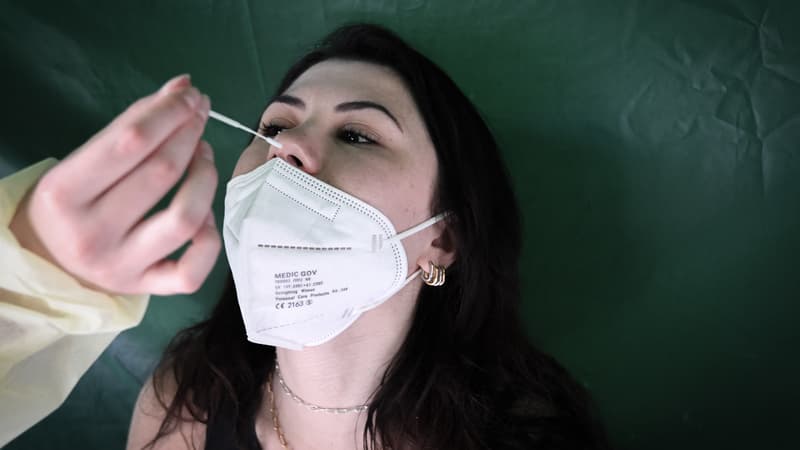Social Security will stop reimbursing most PCR tests and other antigens at 100%. Tests to detect Covid-19, with some exceptions, will no longer be fully covered by Health Insurance as of March 1, following a decision by the Ministry of Health.
These tests can only be fully reimbursed by Social Security for people over 65 years of age, minors, long-term patients (ALD) as well as health and medical-social personnel, as well as their employees, indicates I’disrupted published this Monday and pointed out by our colleagues from Parisian.
Certain collective tests organized by the authorities or “educational establishments” as part of a “cluster or suspected cluster” may also entitle you to full reimbursement from Health Insurance.
A remaining charge even with a prescription
For others, there will be a charge, even if the test is prescribed by a doctor. This amount “will amount to 30% of the cost of the test if it is performed by a doctor or pharmacist and 40% if it is performed by a nurse or a masseuse-physiotherapist,” the ministry specifies in a press release. Test prices are currently at least 22 euros for an antigen test and 44 euros for a PCR test.
This remaining charge may be covered by supplementary health insurance if the person using the test is covered. In this case, the insured will have nothing to pay.
Therefore, having a health pass is no longer enough to allow full reimbursement for these tests, even for a person who is in contact, who has already tested positive for Covid in the previous days or who simply has symptoms. “Free” access to tests had already been restricted in October 2021when the government removed the refund for people without such a pass.
A less tense epidemic situation than in the past
“The significant slowdown in the circulation of the virus” justifies that the authorities have to “adapt the screening strategy, bringing it closer to the standards of care of common law,” the ministry estimates in the decree.
In summary: the epidemic is not experiencing such worrying dynamics as in the past, reimbursement for tests is no longer considered necessary to monitor it and seek to stop it.
This downward trend in Covid-19 indicators already led the government to abandon its “test, trace, isolate” strategy on February 1, which in particular imposed isolation on people who tested positive. The High Authority for Health (HAS) is also working on the possibility of reinstating unvaccinated carers as part of a public consultation and is due to issue an opinion in early March. These opinions are usually followed by the government.
A very low but growing number of cases
The Covid-19 figures, compiled in particular by Santé Publique France, are currently at a particularly low level on the scale of the three years of the pandemic. The number of positive cases detected currently stands at 3,500 daily according to Covid Tracker, after two peaks of around 60,000 daily cases in mid-December and mid-October, far from the more than 100,000 daily cases in July (130,000 daily cases). . day) and March (140,000) of 2022. The record remains the month of January 2022 during which a peak of more than 360,000 cases of Covid-19 per day was recorded.
The number of tests has also remained and still according to Covid Tracker at less than 60,000 per day as of February 15, an all-time low since July 2020, shortly after the launch of the testing campaign. About 7% of tests came back positive at the end of February, a slightly higher rate than in mid-February, when it hovered around 5%. Similarly, the number of new Covid-19-related hospitalizations drops to 1,300 in the week (i.e. -10% compared to the previous week) as does the number of deaths (105, i.e. – 27%).
Despite these very low indicators, Santé Publique France indicates in its latest epidemiological bulletin that the rate of incidence and positivity of the virus is increasing “among people aged 20 or over” and that it is “growing or stable in most of the regions”. .
Source: BFM TV


